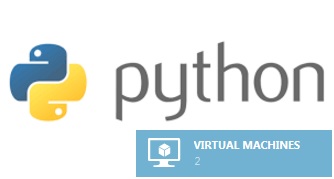In Azure Classic all virtual machines are located in the “same” place. There is no need to select each region and list VMs.
The documentation about the topic is located here:
http://azure-sdk-for-python.readthedocs.org/en/latest/ref/azure.servicemanagement.models.html
Below code displays all Virtual Machines via Python:
from azure.servicemanagement import *
subscription_id = 'XXXXXXXXXXXXXXXXXXXXXXX'
cert_file = 'XXXXXXXXX.pem'
sms = ServiceManagementService(subscription_id, cert_file)
services = sms.list_hosted_services()
count = 0
print("{:<25} {:<20} {:<10} {:<15} {:<25} {:<20}".format("VM name", \
"Status", "Size", "Power state", "Service creation", "Role size"))
for service in services:
props = sms.get_hosted_service_properties(service.service_name, True)
for dep in props.deployments.deployments:
for inst in range(0, len(dep.role_instance_list)):
iname = dep.role_instance_list[inst].instance_name
istatus = dep.role_instance_list[inst].instance_status
isize = dep.role_instance_list[inst].instance_size
ipower = dep.role_instance_list[inst].power_state
typ = dep.role_list[inst].role_size
count += 1
print("{:<25} {:<20} {:<10} {:<15} {:<25} {:<20}".format(\
iname, istatus, isize, ipower, dep.created_time, typ))
print(count)
Output:
VM name Status Size Power state Service creation Role size vm1 StoppedDeallocated Stopped 2015-03-20T09:41:00Z Large vm2 StoppedDeallocated Stopped 2015-03-20T09:41:00Z Large
The same with Azure PowerShell:
$vms = Get-AzureVM
$count = 0
foreach($vm in $vms)
{
$count++
Write-Host $vm.name
}
Write-Host "Count: " $count

Leave a Reply